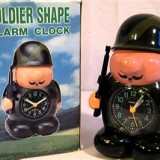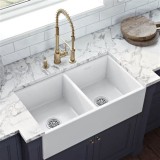How To Keep Food Warm In The Oven Without Drying It Out
Keeping food warm and fresh after cooking is an important aspect of food preparation. No one likes cold food, especially when it comes to special dishes. However, keeping food warm in the oven without drying it out can be a tricky task. Several essential aspects need to be considered to ensure that the food remains moist and flavorful while maintaining its warmth. This article will explore the crucial factors involved in keeping food warm in the oven without compromising its quality.
One of the most important factors is oven temperature. When keeping food warm, it should be maintained at a low temperature to prevent overcooking or drying out. Lower temperatures allow the food to stay warm without affecting its texture or flavor. It is advisable to set the oven temperature between 150-200 degrees Fahrenheit (65-93 degrees Celsius).
Another key aspect is the choice of cookware. Certain types of cookware are better suited for keeping food warm than others. Heavy pots and pans with tight-fitting lids help retain moisture and prevent dryness. Ceramic or glass dishes are also good options, as they distribute heat evenly and prevent hot spots that can cause uneven cooking.
Additionally, using a small amount of moisture is essential to keep food moist. Adding a splash of water or broth to the bottom of the dish before placing it in the oven can create a humid environment that helps prevent drying out. Covering the food with aluminum foil or parchment paper is also an effective way to trap moisture and protect it from direct oven heat.
Proper ventilation is another factor that should not be overlooked. An oven without proper ventilation can lead to steam buildup, which can make food soggy. Leaving the oven door slightly ajar or using a heatproof stand or trivet to elevate the dish allows excess steam to escape while still maintaining warmth.
For extended periods of time, consider using an insulated food container or a warming tray. Insulated containers help retain heat effectively, while warming trays provide a constant heat source to keep food warm for longer durations. These options are ideal for keeping large quantities of food warm for longer periods.
Furthermore, the type of food being kept warm also plays a role. Some foods, such as meats and casseroles, can withstand longer periods of warming without drying out compared to delicate items like fish or vegetables. It is important to adjust the warming time and temperature accordingly to suit the specific food.
By carefully considering these essential aspects, you can effectively keep food warm in the oven without compromising its moisture and flavor. The right combination of temperature, cookware, moisture, ventilation, and duration will ensure that your food remains warm and delicious, ready to be enjoyed at any time.

How To Keep Food Warm In The Oven Before Serving Kitchenaid

How To Keep Food Warm In The Oven Before Serving Kitchenaid

10 Ways To Keep Food Warm At Your Next Party Aleka S Get Together

How To Keep Food Warm For Hours Before Serving With No Quality Loss

Oven Temp To Keep Food Warm Without Drying Out Izzycooking

How To Keep Food Warm Without Drying It Out Ehow

How To Keep Food Warm In The Oven Before Serving Kitchenaid

What Is The Recommended Temperature To Keep Food Warm Thermopro

What Is The Recommended Temperature To Keep Food Warm Thermopro

How To Keep Food Warm In The Oven Before Serving Kitchenaid








